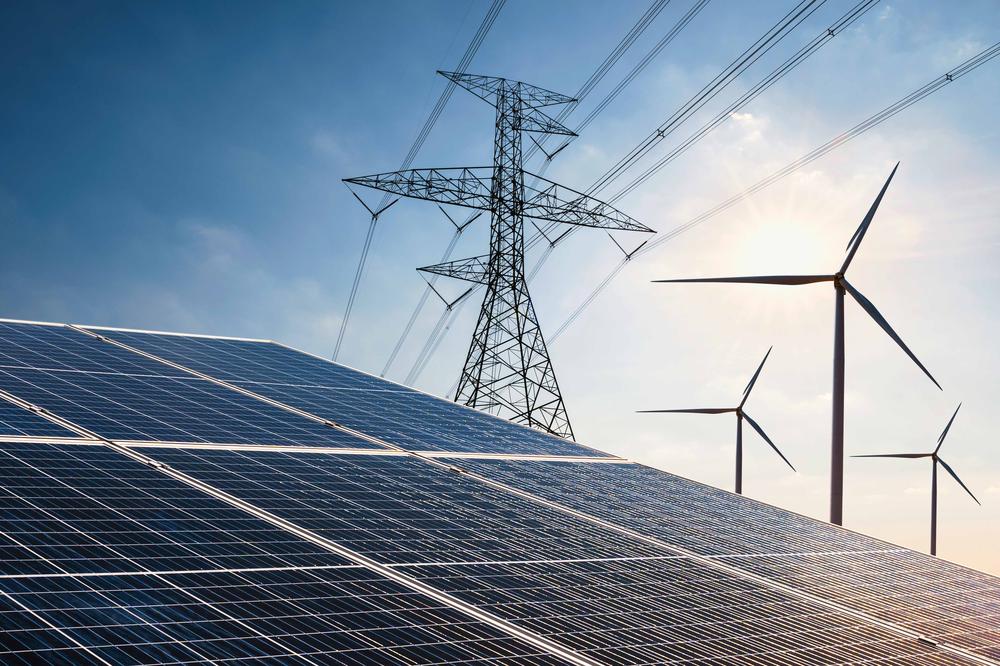
The B2B platform for the best purchasing descision. Identify and compare relevant B2B manufacturers, suppliers and retailers
Close
Filter
Result configuration
Continents
Select continent
Locations
Result types
Company type
Select company type
Industries
Select industry
Company status
Select company status preset
Number of employees
Min.
Max.
Founding year
SkySails
Hamburg, Germany
A
101-250 Employees
-
Key takeaway
The company specializes in developing and manufacturing Airborne Wind Energy Systems that harness clean and potent energy from the wind. They are pioneers in this field, offering systems that revolutionize the way wind is converted into electricity, contributing to the global transition to renewable energy.
Reference
Core business
Wind Power: Unleashing its True Potential | SkySails Power
Our kites revolutionize wind power. We believe they are the key to unlock 100% renewables around the clock for a more sustainable future.
Kitenergy S.r.l.
Rivalta di Torino, Italy
B
1-10 Employees
2010
Key takeaway
Kitenergy is an innovative Italian engineering company focused on transforming the concept of generating energy from high-altitude winds into reality. They develop a 100 kW high-altitude wind energy generator, utilizing power kites to harness the energy from powerful winds, positioning themselves as pioneers in the airborne wind energy sector.
Reference
Core business
Altitude Wind Energy Generation - Kitenergy
A radical innovation in wind energy generation, Kitenergy transforms powerful high-altitude winds into electricity using power kites.
Kitepower
Delft, Netherlands
A
11-50 Employees
2016
Key takeaway
Kitepower is a prominent player in the Airborne Wind Energy sector, developing innovative and cost-effective technologies that significantly reduce CO2 emissions and provide a sustainable alternative to diesel generators. Their flagship product, the Kitepower Falcon, is designed to empower remote communities with efficient wind energy solutions, using up to 90% less material than traditional turbines.
Reference
Core business
Kitepower Airborne Wind Energy - Plug & Play Mobile Wind Energy
Kitepower is a leading start-up in Airborne Wind Energy. We develop innovative cost-effective alternatives to existing wind-power turbines.
Looking for more accurate results?
Find the right companies for free by entering your custom query!
25M+ companies
250M+ products
Free to use
Kitekraft
Munich, Germany
A
1-10 Employees
2019
Key takeaway
Kitekraft is focused on advancing airborne wind energy through its innovative flying wind turbines, which promise to deliver 10 times more efficient wind power systems. Their technology, rooted in scientific research, aims to enhance the renewable energy landscape and address the urgent need for sustainable solutions.
Reference
Core business
Kitekraft - Flying Wind Turbines
10x more efficient wind power systems to power the world.
Seawind Ocean Technology
Amsterdam, Netherlands
A
11-50 Employees
2014
Key takeaway
Seawind is dedicated to advancing offshore wind energy through its innovative floating and bottom-fixed turbines, which are designed to support global decarbonization efforts. Their patented technology, including the Seawind 6 and 18 MW turbines, offers a cost-effective solution for developing wind farms in various water depths.
Reference
Core business
Seawind Ocean Technology - Homepage
A leading turnkey supplier of sustainable and cost-effective floating & bottom fixed offshore wind assets.
Windswept and Interesting Limited
United Kingdom
A
1-10 Employees
2012
Key takeaway
The company is developing a fully autonomous 50kW kite turbine, which utilizes airborne wind energy technology. Their first commercial product is set to be launched by the end of 2024, emphasizing a scalable and innovative approach to harnessing wind power.
Reference
Core business
Windswept Kite Turbines Home
We make flying wind turbines. Kite Turbines are multi-blade rotors, flown on tensioned tethers. The turbine elements are networked for safe, reliable and scalable operation.
Airwin GmbH
Lüneburg, Germany
A
11-50 Employees
-
Key takeaway
AIRWIN GmbH is a management and consulting company focused on renewable energies, with a strong emphasis on wind energy. Their dedicated team of specialists offers expertise and reliable support, making them a competent advisor in the wind sector.
Reference
Service
AIRWIN Windfarmer | AIRWIN
Agile Wind Power
Dübendorf, Switzerland
A
1-10 Employees
2010
Key takeaway
Agile Wind Power AG has developed the Vertical Sky® technology, an innovative solution for harnessing wind energy, particularly through its powerful vertical wind turbines. This approach directly addresses the growing energy markets and highlights the company's commitment to technological and economic innovation in renewable energy.
Reference
Product
Technology - Vertical Sky
Agile Wind Power's Vertical Sky® technology is the first powerful vertical wind turbine to be built.

Terawind
Vienna, Austria
A
1-10 Employees
2021
Key takeaway
Terawind focuses on harnessing strong winds for renewable energy generation through innovative technology that adapts to high and rapidly changing wind speeds.
Reference
Core business
Terawind
Brainwhere
Kilchberg (ZH), Switzerland
A
1-10 Employees
2018
Key takeaway
Brainwhere offers an innovative airborne wind power solution that operates at jet stream altitudes, enabling clean and decentralized energy production at a lower cost compared to traditional diesel generators. Their Airborne Wind Turbine is designed to enhance existing wind park infrastructure and improve overall return on investment.
Reference
Core business
Vision | Mysite
Technologies which have been searched by others and may be interesting for you:
Airborne Wind Energy refers to innovative technologies that harness wind energy at higher altitudes, where wind speeds are generally stronger and more consistent. These systems typically utilize tethered devices, such as kites or drones, which convert kinetic energy from the wind into electrical energy. The key advantage lies in their ability to access winds that traditional wind turbines cannot reach, potentially increasing energy efficiency and reducing the physical footprint of wind energy installations. This technology is gaining traction as a sustainable alternative for generating renewable energy, with various providers developing unique solutions to optimize performance and reliability.
Airborne Wind Energy systems utilize high-altitude wind currents to generate electricity. These innovative systems often involve tethered kites or drones that capture energy from winds at elevations where traditional turbines are less effective. As the airborne device ascends, it generates lift and maneuvers to harness wind energy efficiently. The kinetic energy from the wind is converted into electrical energy through onboard generators. This energy is then transmitted down to the ground station via the tether. By operating at higher altitudes, these systems can access stronger and more consistent winds, making them a promising alternative to conventional wind energy solutions.
1. Cost-Effectiveness
Airborne wind energy systems often have lower operational and maintenance costs compared to traditional wind turbines. This is due to the reduced wear and tear on components as they operate at higher altitudes where wind speeds are typically stronger and more consistent.
2. Environmental Impact
These systems can have a smaller environmental footprint. They require less land space and can be deployed in areas that might not be suitable for conventional wind farms, thereby minimizing disruption to wildlife and natural habitats.
3. Energy Accessibility
Airborne wind energy technologies can access wind resources that are otherwise unreachable by ground-based turbines. This capability allows for energy generation in locations with high wind potential, expanding the potential for renewable energy generation on a global scale.
4. Scalability
Many airborne wind energy systems are designed to be modular and scalable. This flexibility allows for easy adaptation to different energy demands and geographies, making it easier to deploy in various environments.
5. Reduced Land Usage
By utilizing kites or drones that operate at altitude, airborne wind energy solutions require significantly less land area compared to traditional wind farms. This aspect is particularly advantageous in densely populated or agricultural regions.
6. Enhanced Energy Capture
Higher altitudes generally experience stronger and more stable winds. Airborne wind energy systems can capture this energy more effectively, leading to increased overall energy production compared to ground-based options.
Implementing airborne wind energy faces several significant challenges. One of the main issues is technological complexity. The systems require advanced materials and engineering to withstand extreme conditions at altitude. Additionally, the control systems must navigate the dynamic wind environment, which can complicate operation and maintenance. Another critical challenge is regulatory hurdles. Airborne wind energy technologies often operate in airspace that is regulated by aviation authorities. Gaining the necessary approvals and ensuring compliance with regulations can be a lengthy process. Furthermore, economic viability is a concern, as initial investments can be high, and the technology is still in the early stages of commercialization. These factors must be addressed for widespread adoption and implementation.
The market potential for airborne wind energy is significant, driven by the demand for renewable energy solutions and the need to reduce carbon emissions. This technology harnesses high-altitude winds, which are typically stronger and more consistent than those found at ground level. As countries transition towards sustainable energy sources, airborne wind energy systems offer a promising alternative that could complement traditional wind farms while reducing land usage and installation costs. Investments in research and development are increasing, with various companies exploring innovative designs and techniques. The potential to generate electricity in remote areas, offshore, and at lower costs than conventional wind energy makes this sector appealing to investors. As technology advances and regulatory frameworks adapt to accommodate airborne wind systems, the market is expected to grow rapidly, attracting attention from both large energy corporations and startups.
Some interesting numbers and facts about your company results for Airborne Wind Energy
| Country with most fitting companies | United Kingdom |
| Amount of fitting manufacturers | 10000 |
| Amount of suitable service providers | 10000 |
| Average amount of employees | 1-10 |
| Oldest suiting company | 2010 |
| Youngest suiting company | 2021 |
20%
40%
60%
80%
Some interesting questions that has been asked about the results you have just received for Airborne Wind Energy
What are related technologies to Airborne Wind Energy?
Based on our calculations related technologies to Airborne Wind Energy are Water/Ocean Cleaning Technologies, Waste Management, Renewable Energy, Sustainable Fashion, Smart Grid
Who are Start-Ups in the field of Airborne Wind Energy?
Start-Ups who are working in Airborne Wind Energy are Terawind
Which industries are mostly working on Airborne Wind Energy?
The most represented industries which are working in Airborne Wind Energy are Oil, Energy and Gas, Other, Aviation and Aerospace, IT, Software and Services, Construction
How does ensun find these Airborne Wind Energy Companies?
ensun uses an advanced search and ranking system capable of sifting through millions of companies and hundreds of millions of products and services to identify suitable matches. This is achieved by leveraging cutting-edge technologies, including Artificial Intelligence.